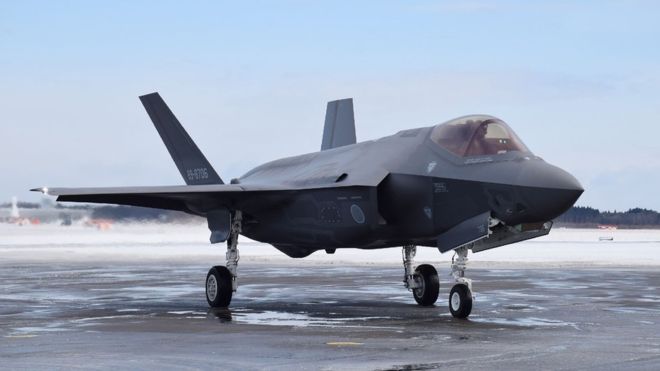Japanese F-35A stealth fighter crashed into Pacific Ocean at about 1,100km/h

The Lockheed Martin aircraft disappeared from radar screens during an exercise on 9 April.Some debris and the remains of the 41-year-old pilot have been discovered.Officials said F-35A flights, which had been halted, will resume after additional training.This was the first reported crash involving an F-35A, according to Japan’s Air Self Defense Force (JASDF).
What did investigators conclude?
The plane, which was less than a year old, crashed 28 minutes after taking off from Misawa air base in Aomori prefecture.The aircraft came down at a speed of about 1,100km/h (683mph), officials believe.The pilot gave no indication he was in trouble and there is no evidence he tried to eject his seat. He had only 60 flying hours in the F-35A.
It said it was unlikely the crash was caused by “technical problems with the aircraft”.Defence Minister Takeshi Iwaya told a briefing the spatial awareness issue could “affect any pilot regardless of their experience”.
The air force was not able to recover any intact data from flight data recorders to back up its assessment.
However, by appearing to rule out any mechanical or software problems, the investigation is unlikely to prevent future use of the jet.Mr Iwaya said vertigo training for pilots would be increased and checks carried out on the remaining F-35As. Residents near the Misawa base would also be consulted but flights would then be resumed.
Japan is replacing its older F-4s with the F-35As, with a plan for a force of about 150.It’s basically being unable to figure out where you are in relation to your environment, and is clearly a serious issue for pilots when the horizon is not visible, for example due to darkness or clouds.Situational awareness is a core issue in training to be a pilot but even experienced aviators can lose track of where they are.
The is sometimes due to a distraction or because of the heavy workload of the cockpit, conditions amplified in a modern fighter jet.It has been known to cause crashes.
Investigators of the Black Sea crash of a Tu-154 airliner in December 2016 that killed 92 people concluded the cause “could have been disruption of the flight captain’s spatial and situational awareness, which led to him making errors”.Experts suggested the pilot had suffered from “somatogravic illusion” – a condition that can affect a pilot’s sense of balance during rapid acceleration or deceleration.





